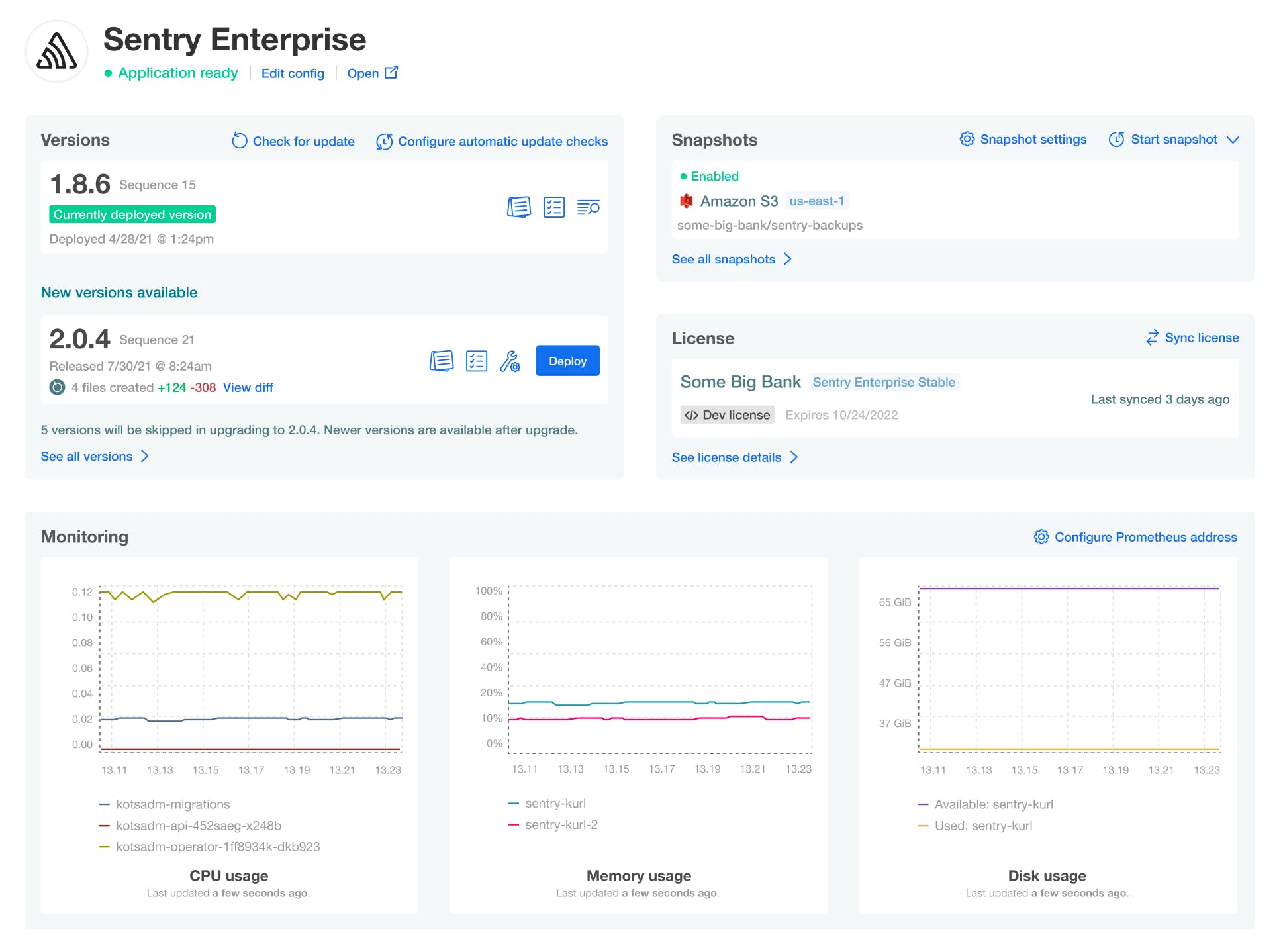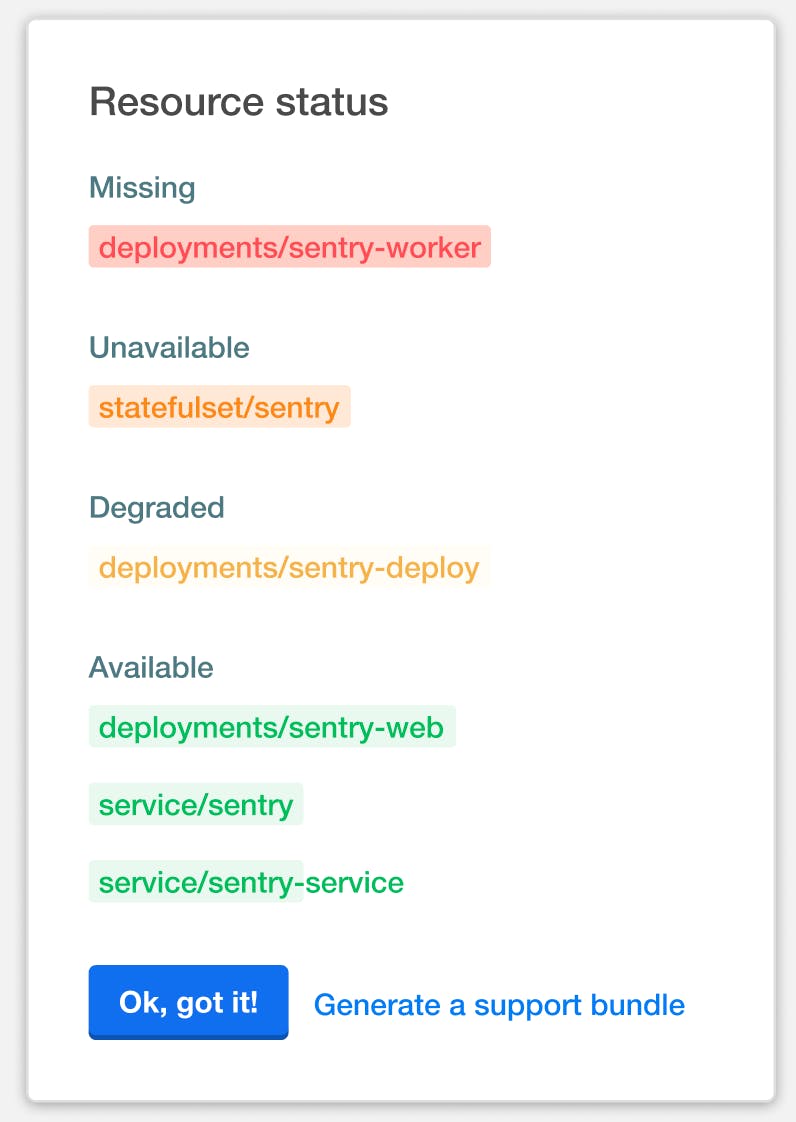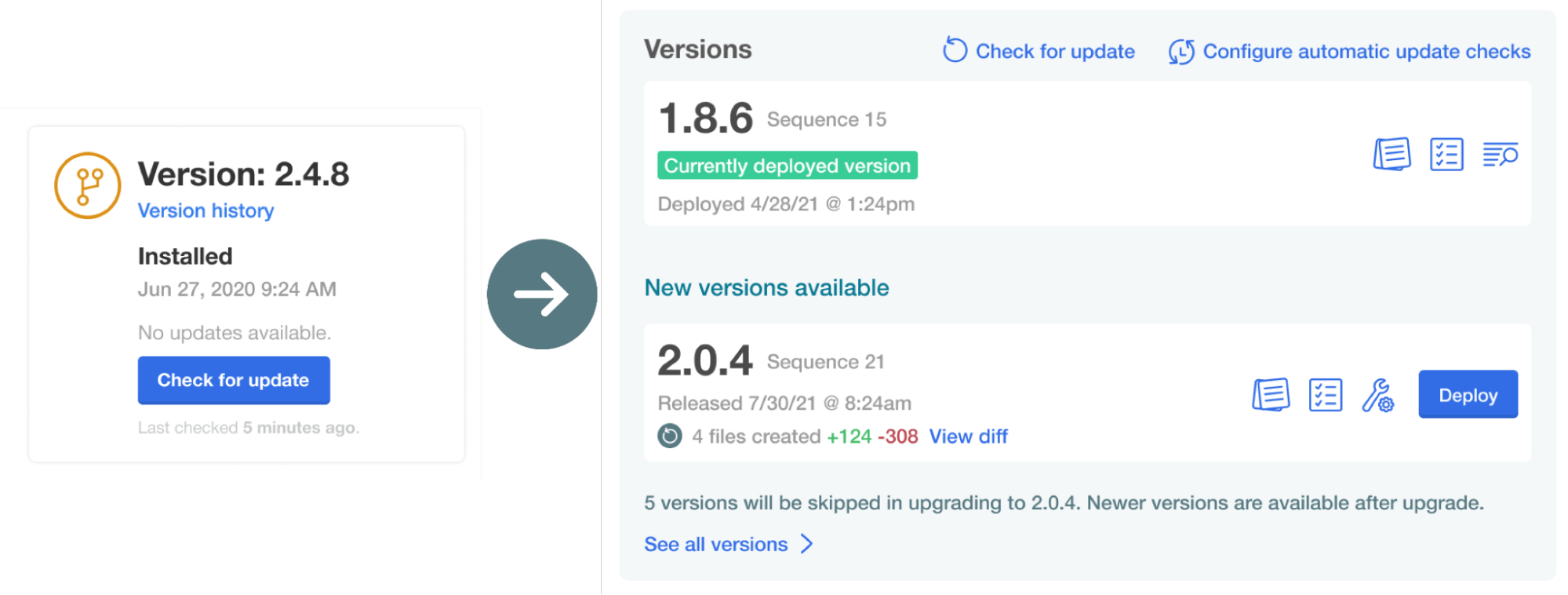Not long ago, we introduced a new UI/UX to the dashboard in the KOTS admin console for applications deployed on Kubernetes with replicated. We said then, “In an upcoming version of replicated’s app manager, we are going to introduce exciting redesigns of the admin console app dashboard and version history pages. These redesigns are not only aesthetic improvements, but the app dashboard redesign, in particular, is functional, too. This redesign brings key capabilities and information right to the app dashboard. For example, you will be able to view and sync your license, see the configured snapshot storage destination, take a snapshot, configure automatic updates, and more right from the dashboard.”
Now that we’ve delivered our promises, we’d like to dive deeper into how the new UX works.
An enhanced K8s application dashboard

The main goal of redesigning the dashboard was to create a single spot where your customers could perform common tasks. Most importantly, we wanted to create a single location where customers can check for and deploy new versions. This streamlines the task and keeps applications more up-to-date for your enterprise users, hopefully reducing everyone’s support burden and security issues.
With the redesign, your customer can do the following directly from the admin console dashboard:
- Configure automatic update checks and deployments
- View configured snapshot settings
- Start a snapshot
- Sync their license(s)
We've made the dashboard view more valuable by bringing these common tasks to a single page. Previously, customers could consume a limited set of information about their application. Now, it’s more about taking action. Anyone can perform the key management tasks using the application subnav tabs, all from the dashboard view.
K8s application status

The application status area was moved up to the top position, making it much more prominent. This makes the status of the application easily viewed (one of the most important pieces of information to the customer on this page.)
To help customers self-support, we also added a “Details” link when the application status is unknown or missing that lists all resource status’ instead of just giving the customer a link to create a support bundle.

K8s application version history

The version history card underwent the most changes in both design and functionality. We wanted to make it quick and easy for a vendor to see their currently deployed version and take action, like editing the config or redeploying the version.
Another change was to show a meaningful card for the latest available version. Previously, the card showed that a new version was available, but you had to go over to the version history page and find the new version row in order to deploy it, check the preflights, or edit the config, which was cumbersome. Now, all of this is available to users from the dashboard page.
The latest available version section also considers any releases that a vendor has marked as “Required” when displaying the latest release available for upgrade. For example, the latest version of an application is v1.1.0, but the vendor marked v1.0.6 as required. If the customer is on v1.0.0, the latest available version section displays v1.0.6 as the latest version available to the customer. After the customer deploys the required v1.0.6, the section will show v.1.1.0 as the latest available version for upgrade. This reduces the likelihood of issues arising from breaking changes or out-of-order updates.
You can use the actions from this new version card in the top right to check for an update and configure automatic update checks and automatic deployments. We also made this card look like a row in the version history page so that buttons for viewing release notes, viewing preflights, and editing config are available. This eliminates the need to visit a new page to take any action with your currently deployed version.
Another big advantage of this new design is the ability to view and deploy the latest available version right from the dashboard. Bringing this functionality to the dashboard adds tremendous value to the dashboard because a vendor can now check for a new version, see and diff it against the currently deployed version, and ultimately deploy the update all from the dashboard.
K8s application license management

The license card was the beneficiary of a few nice functional additions. With the new dashboard license card, we enable you to sync your license right from the dashboard. This new license card shows the license type, expiration date, time of the last sync, and channel the customer is assigned to.
Snapshots management

The snapshots card received a pretty nice upgrade as well. With the newly designed card, we’ve made it immediately clear if snapshots are enabled and highlights the configured storage destination.
To further reduce the number of clicks required for managing snapshots, we added links directly to the snapshot settings from the card. Customers can also start a partial (application) snapshot or a full snapshot from the card.